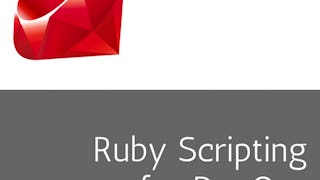Updated in May 2025.
This course now features Coursera Coach! A smarter way to learn with interactive, real-time conversations that help you test your knowledge, challenge assumptions, and deepen your understanding as you progress through the course. This advanced course is designed for developers ready to master Ruby and object-oriented design. Beginning with an in-depth exploration of blocks, procs, and lambdas, you'll learn to write flexible, reusable code. You'll delve into the yield keyword, block return values, and advanced techniques for custom iterators and block parameters. The course then covers: - Ruby classes, including complex hierarchies, instance and class variables, method overriding, the self keyword, and encapsulation with private and protected methods. Emphasis is placed on best practices for robust, maintainable software. -Advanced topics such as inheritance, modules, and mixins are thoroughly examined, including inheritance hierarchies, the super keyword, and mixins for extending functionality. -Practical modules on file input/output, sets, and date/time manipulation are included. By the end, you’ll understand advanced Ruby programming and object-oriented design, ready to tackle complex projects. The course targets experienced Ruby developers familiar with basic syntax and foundational principles.




















